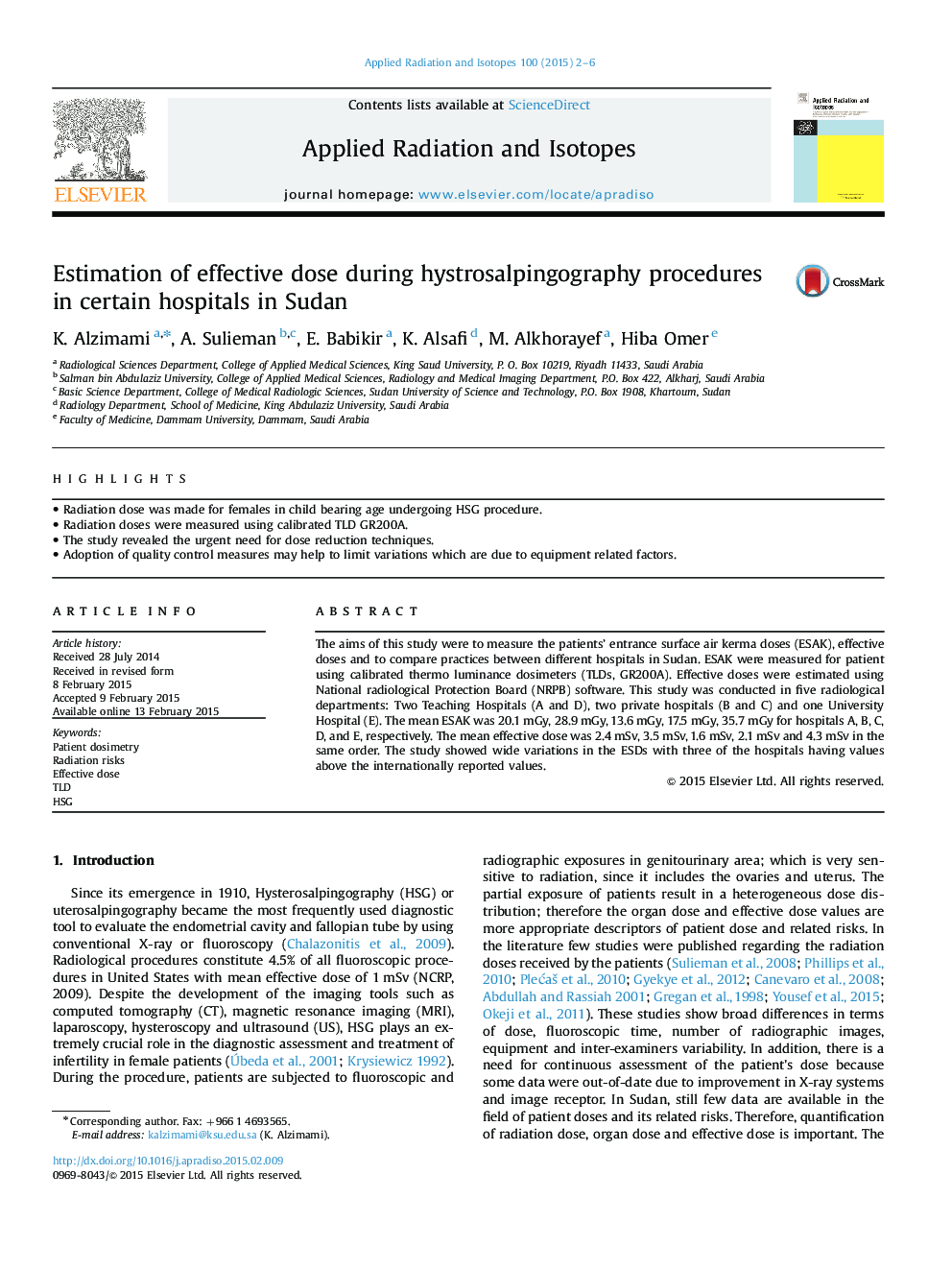| Article ID | Journal | Published Year | Pages | File Type |
|---|---|---|---|---|
| 1878976 | Applied Radiation and Isotopes | 2015 | 5 Pages |
•Radiation dose was made for females in child bearing age undergoing HSG procedure.•Radiation doses were measured using calibrated TLD GR200A.•The study revealed the urgent need for dose reduction techniques.•Adoption of quality control measures may help to limit variations which are due to equipment related factors.
The aims of this study were to measure the patients’ entrance surface air kerma doses (ESAK), effective doses and to compare practices between different hospitals in Sudan. ESAK were measured for patient using calibrated thermo luminance dosimeters (TLDs, GR200A). Effective doses were estimated using National radiological Protection Board (NRPB) software. This study was conducted in five radiological departments: Two Teaching Hospitals (A and D), two private hospitals (B and C) and one University Hospital (E). The mean ESAK was 20.1 mGy, 28.9 mGy, 13.6 mGy, 17.5 mGy, 35.7 mGy for hospitals A, B, C, D, and E, respectively. The mean effective dose was 2.4 mSv, 3.5 mSv, 1.6 mSv, 2.1 mSv and 4.3 mSv in the same order. The study showed wide variations in the ESDs with three of the hospitals having values above the internationally reported values.
